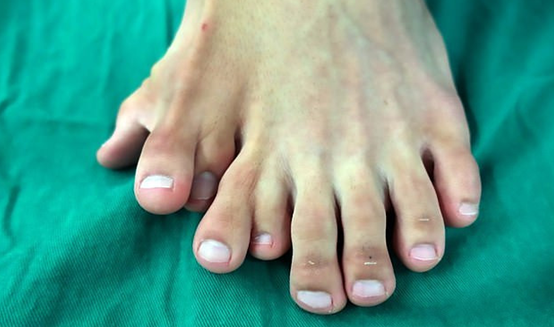Polydactyly
Polydactyly is a condition in which a baby born with one or more extra fingers. It is a common condition that often runs in families. The extra fingers are usually small and abnormally developed. Is one of the most common congenital (present at birth) hand abnormalities. DR KANIKA SINGLA
In most cases, doctors remove an extra finger or toe in early childhood. Goal of treatment is to give your child a hand or foot that works well and looks typical. There are also practical concerns, such as removing an extra toe so your child’s foot fits well into shoes. OUR SERVICES

olydactyly is a condition where a person born with extra fingers or toes on one or both of their hands and feet.
The way polydacty presents can vary. It may appear as a:
- small, raised lump of soft tissue, containing no bones (called a nubbin)
- partially formed finger or toe containing some bones but no joints
- fully functioning finger or toe with tissues, bones, and joints
There are three main types including:
- Ulnar or postaxial polydactyly or small finger duplication: This is the most common form of the condition, where the extra finger is on the outside of the little finger. The side of the hand known as the ulnar side. When this form of the condition affects the toes, it call fibular poly.
- Radial or preaxial polydactyly or thumb duplication: This is less common, occurring in 1 in every 1,000 to 10,000 live births. Extra finger is on the outside of the thumb. it side of the hand known as the radial side. where this form of the condition affects the toes, it is call tibial poly.
- Central polydactyly: This is less common, occurring in 1 in every 1,000 to 10,000 live births. The extra finger is on the outside of the thumb. Hand known as the radial side. we this form of the condition affects the toes, it is call tibial polydactyly.
